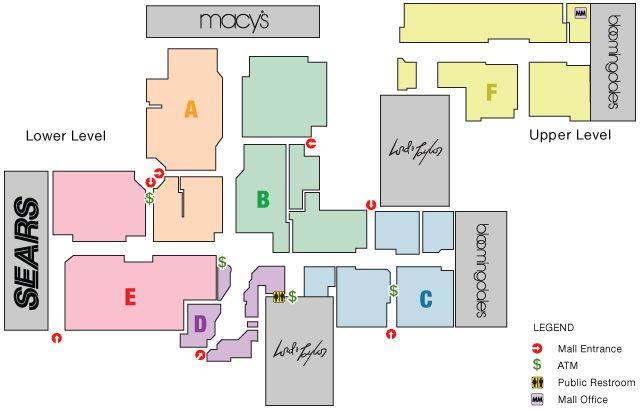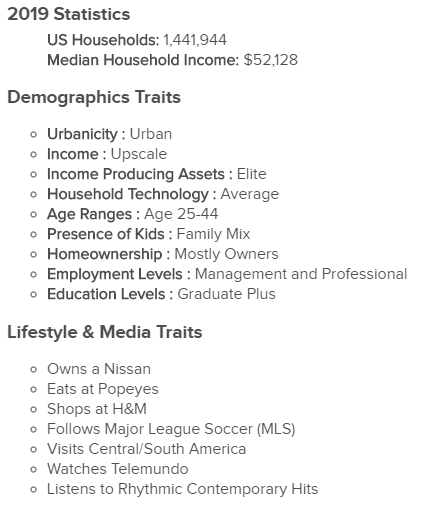Your next job is to choose stores for a new mall based on the idea of target markets.

Part A – Design a blueprint for the perfect mall
You’ve been given the job of designing a new mall located in Grand Blanc. It’s important to the owners that the mall appeals to everyone in the Genesee County Area. That means you can’t just include stores and food options you like, you have to ensure you are meeting the needs/wants of everyone who lives nearby.
Use Gliffy, Google Draw or Floorplanner to design your mall. Include:
- 12 stores – labeled
- 8 food options – labeled
- at least 2 areas with restrooms – labeled
- at least 2 security posts – labeled
- a name for your mall
Part B – Name Your Target
Create a Google Doc called “Name Your Target”. Type the name of your mall at the top of the page and center it. Insert a screenshot of your floorplan below the mall name.
Next, insert a table that is 2 columns by 13 rows. Write “Store Name” on the top of the left column. Right “Target Market” on top of the right column. List your stores down the left column. Describe who you intend the store to appeal to on the right.
Turn this doc into Google Classroom.
Part C – Targeting Specific Demographics
Select 3 groups from Claritas. You can use the following guide to randomize your selections, or you can pick sections on your own. You are going to design the perfect store for your groups.
This store is a single environment built to appeal to 3 distinct market segments. It needs to have at least 6 different departments. A department is an area devoted to a single item and it’s accessories, or an area devoted to multiple related items. A department store may have a kitchen department that includes all of the hundreds of items you’d find in a kitchen. A department store may have a TV department that is mostly TV screens with maybe a couple racks of DVD’s.
First, select and learn about your target market.
If your age is an odd number, use the following numbers to determine your Claritas groups:
- shoe size=PRIZM
- a parent’s age=P$YCLE
- b-day=ConneXions
If your age is an even number, use the following numbers to determine your Claritas groups:
- a parent’s age=PRIZM
- b-day=P$YCLE
- shoe size=ConneXions
Create a document called “Targeted Store” Copy and paste screenshots of your 3 groups from Claritas: PRIZM, P$YCLE and ConneXions.
Insert a table 3 wide by 7 tall. Write the headings, “Target Segment Addressed and Why”, “Product/Service Department Name”, and “Product/Service Description” across the top row and then fill in the information. Here is an example with just one segment and one department. You are going to do 6 departments for 3 segments.
Carefully read the summary, demographic traits and lifestyle and media traits. You are going to design a single store that appeals to all three groups.
This may be a challenge because your groups may have very different characteristics. The first thing you need to do is figure out what you’re going to sell.
For example, say one of your groups was 43 City Roots (Upscale Younger Family Mix).

Some things to take note of is that they are urban, upscale, well-educated professionals. They are likely to own a foreign car, eat fast-food fried chicken, and watch soccer. About 1/3 of your store should be dedicated to meeting the needs of these consumers. What types of departments or kiosks might appeal to these consumers?
Talk about and brainstorm all of the products and services that your target audience might be interested in. Hopefully you will think of some crossover options that apply to more than just one of your segments.
Your goal is to create departments with goods or services to include in your newly designed store. If you want, you can combine products or services into a single unit like a cell phone kiosk that could include cell phones, service plans, and accessories.
Part D – Floor Space
Imagine you’re in a mall. Visualize walking into a Footlocker. Is it spacious, or is everything packed tight? Is there music? What kind? Is it brightly lit or not? Do you see sales people and registers near the entrance, or are they tucked away in the back? Can you see the whole store, or are there aisles and shelves you can’t see around? Are mannequins and displays spread throughout the store, or is it just merchandise? How does it compare to Payless Shoes? Mr. Alan’s? Nordstrom’s?
Retail store design is part art and part science. The main goal of store layout is to get customers into your store, get them interested and engaged with your product/service, and make sure the atmosphere and shopping experience is pleasant enough that they will want to return. Use good design principles to create a layout for the store you created in part C. When you design the floor space of your store, include:
- a backroom for stock and an office
- aisles and customer service areas
- floor merchandise space
- wall merchandise space
You can set aside areas for displays, kiosks or sales. Think about the type of layout you want. There are 4 main types of Store Layout and Design – freeflow, grid, loop, spine, and use Floor Planner to create the perfect design. Be sure to include labels for what items are in what sections as well as backroom, stock, office, and customer service/POS areas.
How to Create Store Interiors That Get People to Buy Your Products
7 Layout Secrets of the Big Retail Chains
Part E – Market Survey
The mall has decided to expand. The owners want to make sure all Grand Blanc familys have shops that meet their needs and wants. You likely have mainstream stores in your mall design already (e.g. Abercrombie, Hollister, etc.). Now it’s time to figure out what niche markets you can find. A niche market is a group of consumers whose needs may be atypical. A niche market is a smaller part of your main market that wants something more specialized or specific when shopping. They may need buying options because they are very budget conscious, organic or “big and tall”.
Steve jobs famously quipped, “a lot of times people don’t know what they want until you show it to them”, Henry Ford said, “if I asked people what they wanted they would have said faster horses.”
Use Google Forms to create a marketing survey intended to find your niche markets. Your survey should be at least 10 questions. Be sure to include at least one of each of the following question types:
- Text
- Paragraph text
- Multiple choice
- Checkboxes
- Choose from list
- Scale
Your questions should focus on habits, hobbies, lifestyle choices, likes, and opinions. Your survey should help you figure out what kinds of new stores would be best to have in the mall, but without asking “what kinds of stores do you want in the mall?” You are trying to tease out consumer needs and wants that your target market may not be aware of.
You could ask questions to figure out if people need a hardware store, a video game store, a dollar store, a book store, an Apple store . Remember, the point of the survey is to gather information to help you figure out which new stores will help meet the needs and wants of kids at GBEMS.
Example Questions:
How many pairs of shoes does your family own?
Is there a specific brand you prefer?
What outdoor activities is your family involved with?





